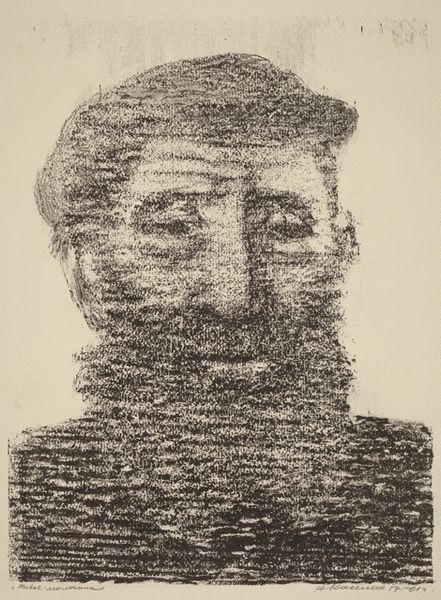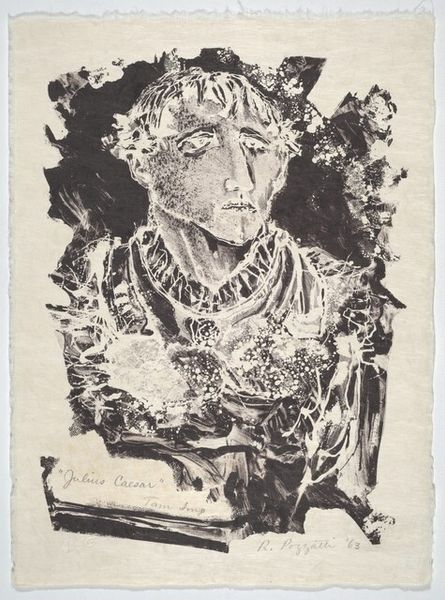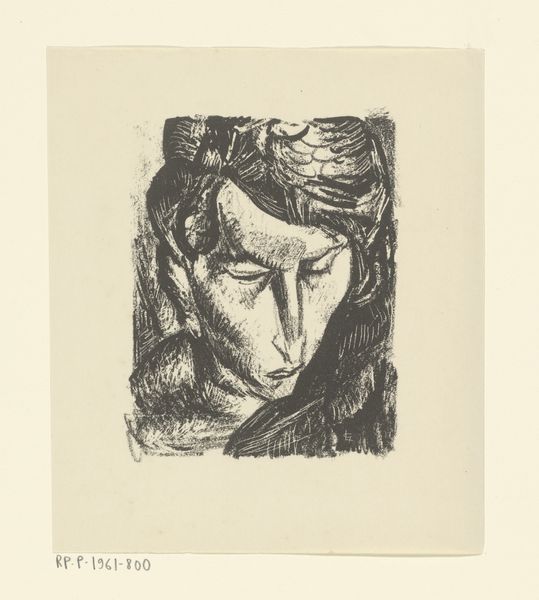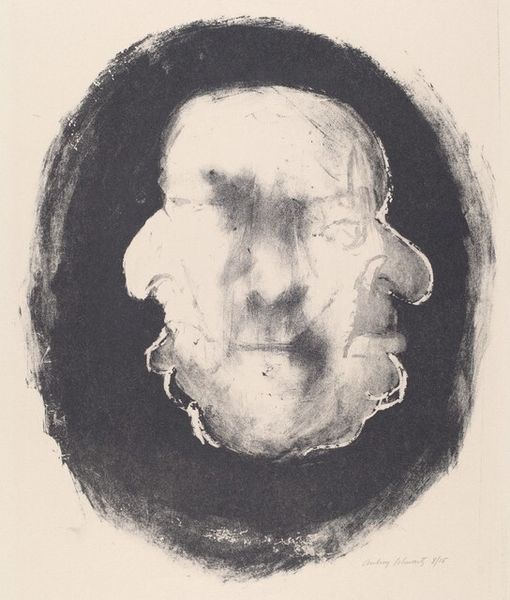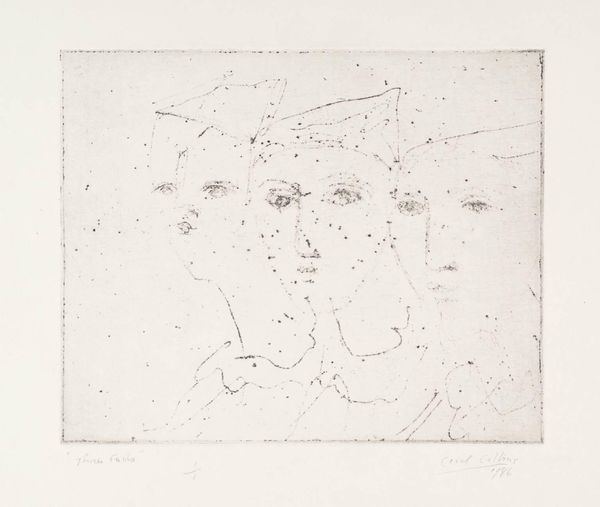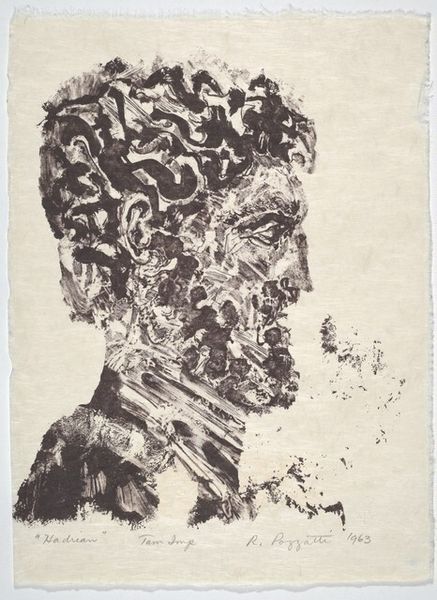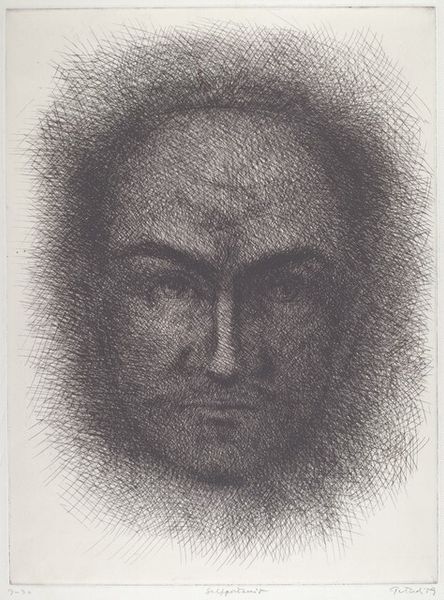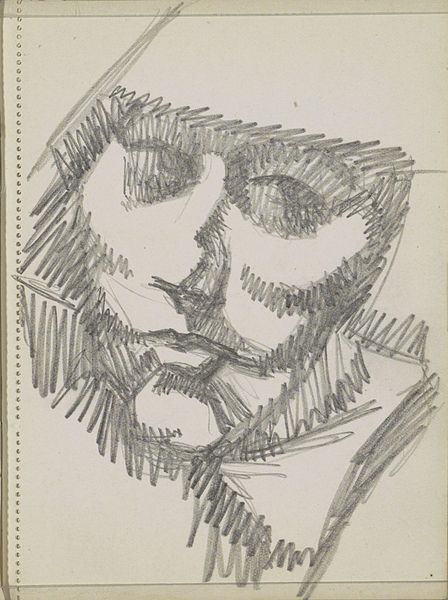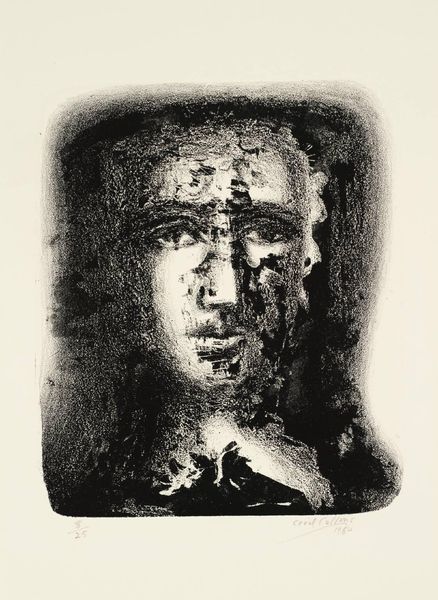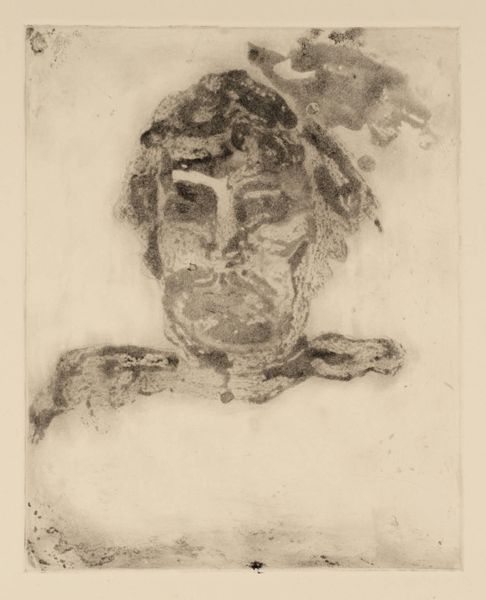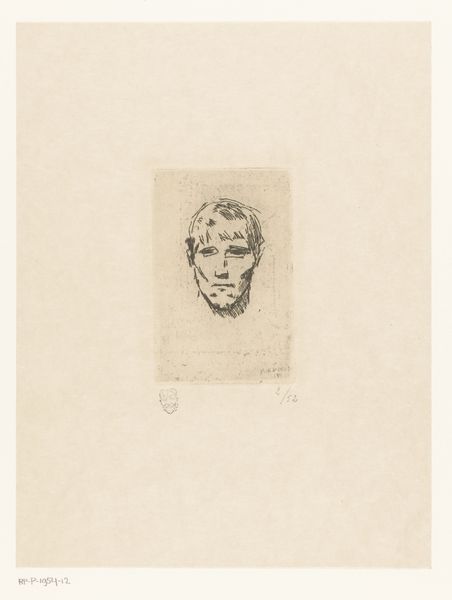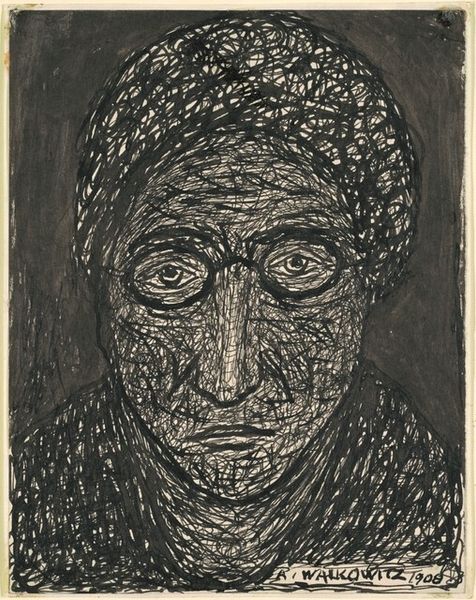
drawing, print, ink
#
portrait
#
pencil drawn
#
drawing
# print
#
pencil sketch
#
figuration
#
ink
#
pencil drawing
#
ink drawing experimentation
Copyright: National Gallery of Art: CC0 1.0
Curator: Looking at Rudy Pozzatti's "Agrippa" from 1963, I am immediately struck by its spectral presence. The use of ink and printmaking lends a fragile yet imposing quality to the subject's face. Editor: Imposing is right. The stark black ink on what looks like handmade paper is a very powerful combination. It feels almost ancient, as if unearthed rather than created. How do the socio-historical aspects inform its reading? Curator: Pozzatti's "Agrippa", completed during a time of significant social upheaval, invokes classical portraiture even while deconstructing it. The visible ink splatters and unfinished lines subvert traditional ideals of perfection often linked to portraits of historical figures. The incomplete rendering serves as a metaphor for fractured power structures. Editor: Absolutely. The way he employs printmaking — particularly, I suspect, with his characteristic experimental approach — is worth dwelling on. It really foregrounds the *process* of artistic labor. You see the layers, the imperfections; it’s not about some seamless illusion, but the very act of creating and transferring the image. Curator: And within the identity politics of the 1960s, portraying an almost deteriorated image of Agrippa – who was, of course, a key figure in consolidating imperial power in Rome — invites us to question the legacy of authority and the very concept of empire through a distinctly contemporary lens. Agrippa becomes almost a symbol of power unravelling. Editor: So interesting. The visual texture is what I find most compelling: the paper choice, the palpable registration errors in the print. This emphasizes the physical, tactile aspects of art production and how the materials contribute to its meaning. Curator: Precisely. It makes the piece much more than a historical portrait. It functions almost as an allegorical exploration into how history itself is constructed and how power shifts, crumbles, and transforms over time. It's an enduring exploration of identity and control in the 20th century. Editor: Agreed. Seeing the labor evident within "Agrippa" highlights not just the artistic intent but the material conditions shaping the artwork. Curator: Exactly, making it resonate far beyond just a depiction of Agrippa himself.
Comments
No comments
Be the first to comment and join the conversation on the ultimate creative platform.
